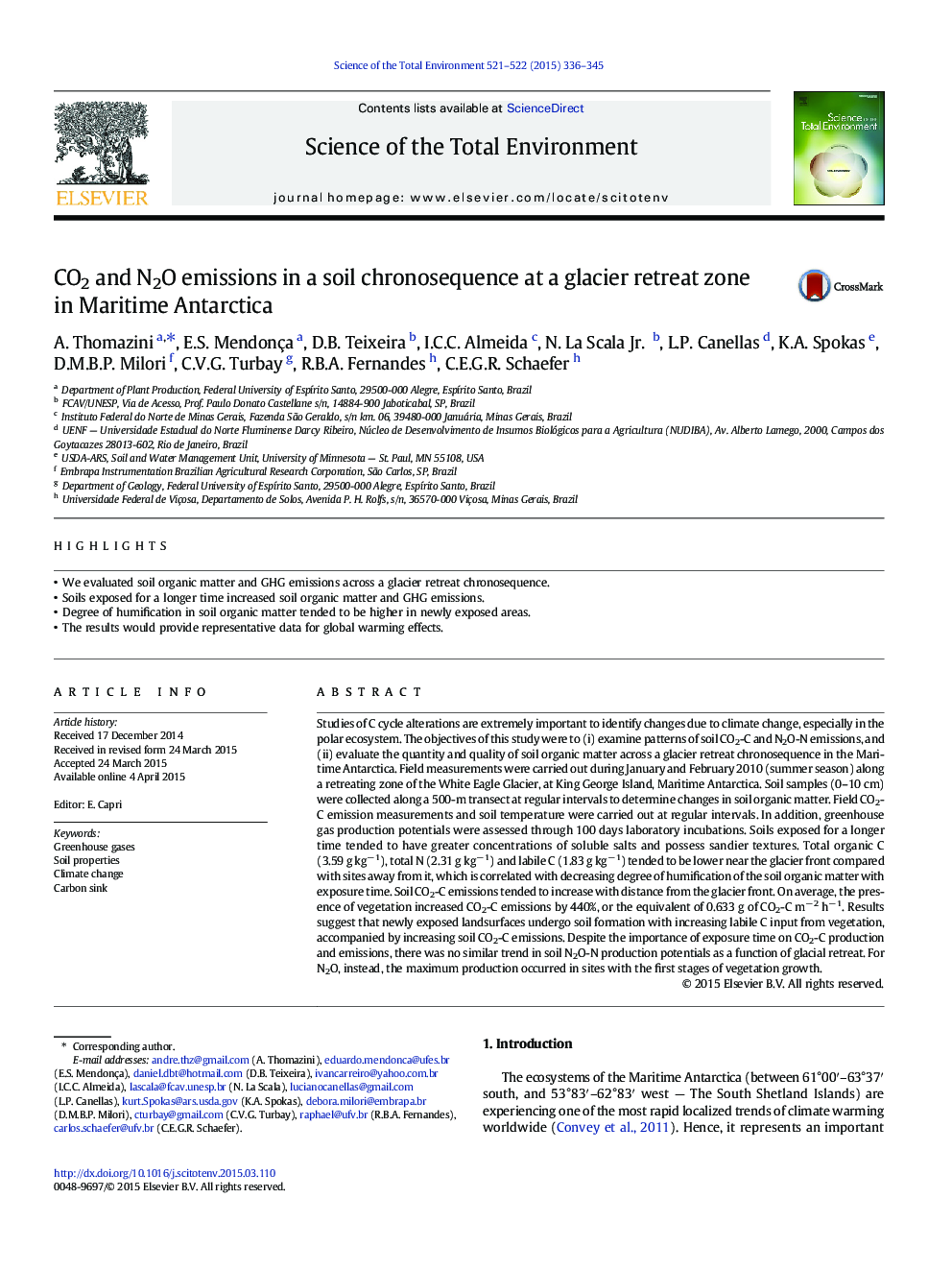| کد مقاله | کد نشریه | سال انتشار | مقاله انگلیسی | نسخه تمام متن |
|---|---|---|---|---|
| 6326613 | 1645536 | 2015 | 10 صفحه PDF | دانلود رایگان |

- We evaluated soil organic matter and GHG emissions across a glacier retreat chronosequence.
- Soils exposed for a longer time increased soil organic matter and GHG emissions.
- Degree of humification in soil organic matter tended to be higher in newly exposed areas.
- The results would provide representative data for global warming effects.
Studies of C cycle alterations are extremely important to identify changes due to climate change, especially in the polar ecosystem. The objectives of this study were to (i) examine patterns of soil CO2-C and N2O-N emissions, and (ii) evaluate the quantity and quality of soil organic matter across a glacier retreat chronosequence in the Maritime Antarctica. Field measurements were carried out during January and February 2010 (summer season) along a retreating zone of the White Eagle Glacier, at King George Island, Maritime Antarctica. Soil samples (0-10 cm) were collected along a 500-m transect at regular intervals to determine changes in soil organic matter. Field CO2-C emission measurements and soil temperature were carried out at regular intervals. In addition, greenhouse gas production potentials were assessed through 100 days laboratory incubations. Soils exposed for a longer time tended to have greater concentrations of soluble salts and possess sandier textures. Total organic C (3.59 g kgâ 1), total N (2.31 g kgâ 1) and labile C (1.83 g kgâ 1) tended to be lower near the glacier front compared with sites away from it, which is correlated with decreasing degree of humification of the soil organic matter with exposure time. Soil CO2-C emissions tended to increase with distance from the glacier front. On average, the presence of vegetation increased CO2-C emissions by 440%, or the equivalent of 0.633 g of CO2-C mâ 2 hâ 1. Results suggest that newly exposed landsurfaces undergo soil formation with increasing labile C input from vegetation, accompanied by increasing soil CO2-C emissions. Despite the importance of exposure time on CO2-C production and emissions, there was no similar trend in soil N2O-N production potentials as a function of glacial retreat. For N2O, instead, the maximum production occurred in sites with the first stages of vegetation growth.
Journal: Science of The Total Environment - Volumes 521â522, 15 July 2015, Pages 336-345